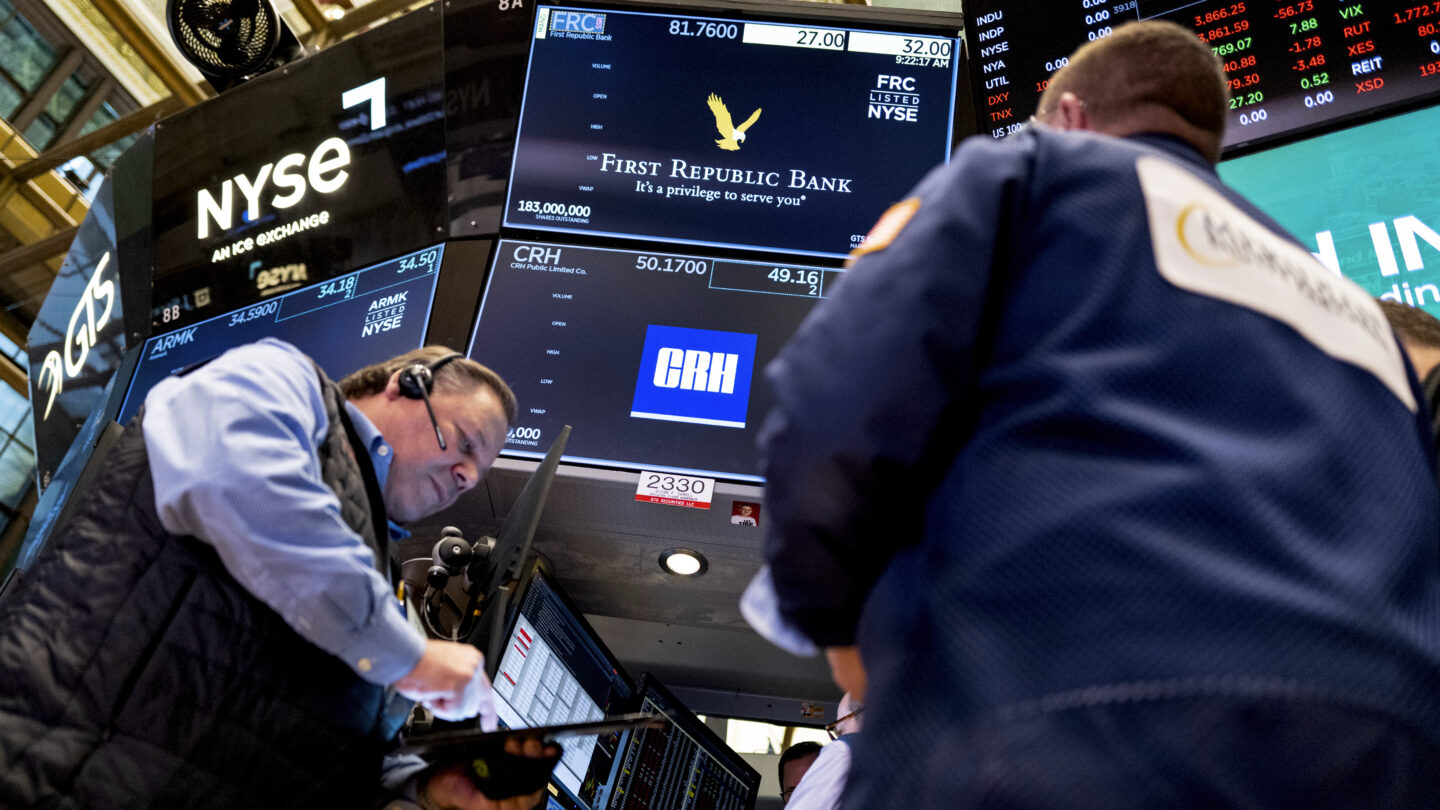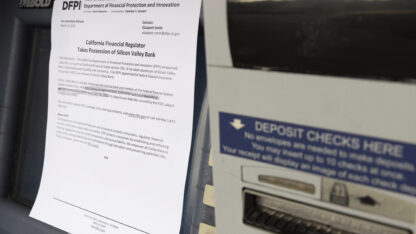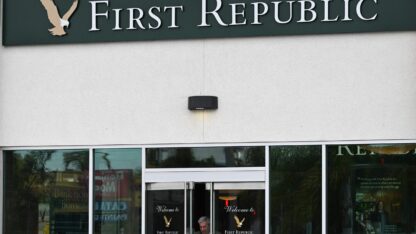5 big moments from the week that rocked the banking system

Craig Ruttle / Craig Ruttle
The sudden collapse of California-based Silicon Valley Bank sent depositors into panic and global markets into chaos as the U.S. government scrambled to prevent the fire from spreading to other banks, and possibly setting aflame the global banking system.
Silicon Valley Bank, or SVB, had been the 16th largest U.S. bank with more than $200 billion in assets and about $175 billion in deposits before it failed last Friday.
After SVB’s collapse, another bank, New York-based Signature Bank, followed. The Biden administration then announced it was taking extreme emergency measures to prevent a total crisis.
Still, by the end of this week, almost everyone with memories of the 2008 financial crisis was holding their breath as they watched a major European bank, Credit Suisse, and another regional one, First Republic, teeter near insolvency.
Here are some of the biggest moments from banking’s troubled week.
Friday, March 10: SVB collapses
California regulators seized SVB on Friday, citing “inadequate liquidity and insolvency” as too many depositors tried to withdraw their money at the same time in a bank run, triggering the biggest bank collapse since the 2008 financial crisis.
The Federal Deposit Insurance Corporation, or FDIC, the government agency that protects bank customers, took control of SVB and set up another bank where depositors could access their money.
Established just 40 years ago, SVB had attracted startup founders and venture capitalists across the tech industry, and boomed during the pandemic. But rising interest rates from the Federal Reserve’s effort to curb inflation in recent months dealt a big blow to the bank’s holdings, particularly its long-term bonds, which dropped in value when the rates went up.
Earlier in the week, SVB had announced it was selling part of its bond holdings and would incur a $1.8 billion loss, spooking account holders who scrambled to transfer out their cash.
Fear spread among startups and other small businesses that used SVB — had their money vanished? The FDIC only insures deposits up to $250,000. But most of the bank’s customers had more than that in their accounts, and many wondered if they would even be able to make payroll in coming day.
Sunday, March 12: Another bank falls, and the government steps in
One casualty of the panic caused by SVB’s collapse was Signature Bank, a midsize New York-based institution that had about $110 billion in assets. State regulators seized the lender after customers withdrew more than $10 billion worth of deposits, according to CNBC.
The Biden administration announced later that day that it would take extraordinary measures to ensure that SVB and Signature depositors got all their money back, even the parts that weren’t insured. The government would use FDIC funds and sell the banks’ assets, with anything leftover coming from a “special assessment” levied on all U.S. banks.
Monday, March 13: Biden confirms that all depositors of SVB and Signature would be safe — but not investors
With the country worried that these were the first moments of another major crisis, and possibly another Great Recession, Biden gave a speech before the markets opened on Monday.
He emphasized that customers of both SVB and Signature could “rest assured” that they would have access to their money that day.
“Your deposits will be there when you need them,” Biden said.
Biden also wanted taxpayers to know they would not be bailing out the bank’s management or investors. He even called for the bank’s managers to be fired.
“If the bank is taken over by FDIC, the people running the bank should not work there anymore,” he said.
Investors would not be protected, because they knowingly took risks, he said, adding: “That’s how capitalism works.”
Wednesday, March 15: Fears of global banking crisis grow after Credit Suisse stocks tumble
Shares of Credit Suisse, the second-largest lender in Switzerland, took a nosedive as fears of a global banking crisis spread. The collapse of SVB and Signature were at the heart of those fears, but Credit Suisse had already been dealing with a basket of troubles including a mass exodus of customers, a series of scandals and poor executive decisions.
On Wednesday, Saudi National Bank, which acquired a 9.9% stake in Credit Suisse last year to become its largest shareholder, said it would not increase its stake in order to stabilize the Swiss lender.
That sent share prices plummeting to an all-time low for the second consecutive day. Over the course of the day, they fell 24%.
As Credit Suisse’s stock price sunk, so did many other bank stocks in U.S. markets. Trepidation grew about the solvency of another lender that had been having problems since the weekend, First Republic Bank.
Thursday, March 16: Credit Suisse and flailing First Republic both thrown lifelines
Credit Suisse announced it would borrow up to $54 billion from Switzerland’s central bank, which stepped in to save the embattled bank and quell investor fears.
Shares jumped following the announcement.
Later that day, a group of 11 big-name banks including Bank of America, J.P. Morgan Chase, Goldman Sachs and Wells Fargo stepped in to save First Republic Bank, a midsized California-based lender that saw its shares tank after SVB’s collapse.
At the end of 2022, First Republic had about $212 billion in assets and $176 billion in deposits, much of which was uninsured — as was the case in SVB and Signature.
The rescue was praised by lawmakers, including Treasury Secretary Janet Yellen, Fed Chair Jerome Powell, FDIC Chair Martin Gruenberg and Acting Comptroller of the Currency Michael Hsu.
“I can reassure the members of this committee that our banking system remains sound,” Treasury Secretary Janet Yellen testified in Congress earlier on Thursday.
Catch up on NPR’s coverage here:
Read NPR’s explainer on Silicon Valley Bank’s collapse.
Startup founders, among SVB’s primary clientele, stand to lose the most.
The Biden administration is taking extreme measures to rescue the two failed banks — but is avoiding one specific term: “Bailout.”
9(MDAxODM0MDY4MDEyMTY4NDA3MzI3YjkzMw004))








